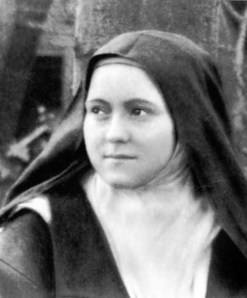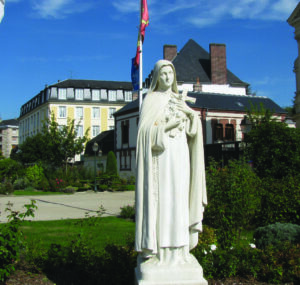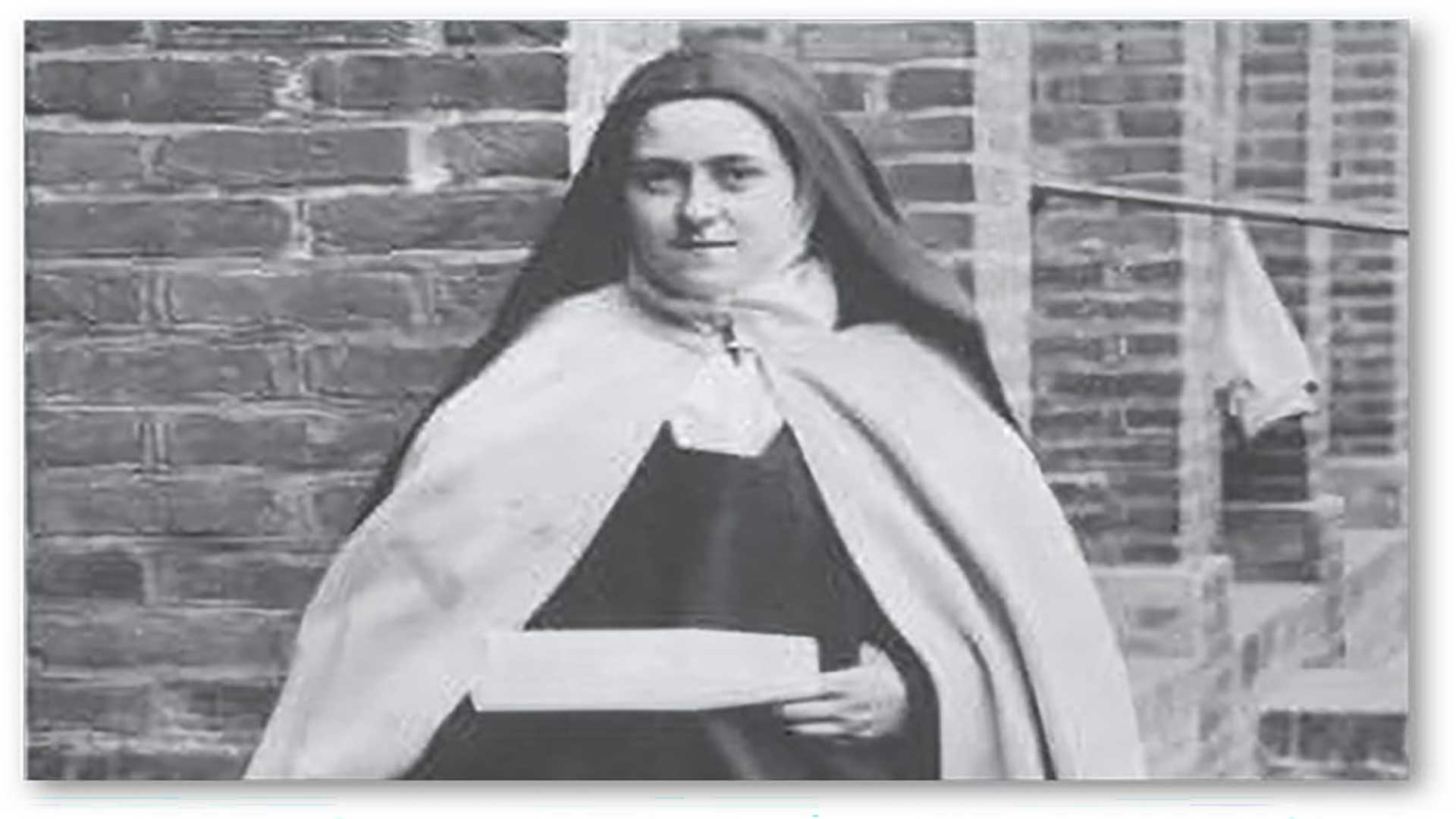Mission of Love
As India is a Mission field, the Mass Readings of this Sunday pertain to the Feast of the Patroness of the Missions: St Teresa of the Child Jesus and the Holy Face, or of the Little Flower, also known as Thérèse of Lisieux.[1]

Three amazing Carmelite Teresas are saints of the Catholic Church, whose feasts take place between August and October: Teresa of Ávila (1515-1582), Thérèse of Lisieux (1873-1897) and Teresa Benedicta of the Cross, née Edith Stein (1891-1942). The first one was the founder of the Order of the Discalced Carmelites; the second and the third were nuns of the same Order.
St Thérèse of Lisieux was born Marie-Françoise Thérèse Martin, in Alençon, France, the youngest of nine children, five of whom survived childhood and became nuns. Thérèse entered the Carmelite convent at Lisieux, where she was outwardly unremarkable, even a little problematic in the worldly sense, and so initially misunderstood. The story of her spiritual development became well known thanks to her autobiography, written by order of the prioresses. It was published in 1898, a year after her death by tuberculosis, under the title Histoire d’une âme (“Story of a Soul”) and became an instant bestseller.
Thérèse died very young and without ever having left the cloister, yet, two years after her canonisation in 1925, Pope Pius XI proclaimed her Patroness of the Universal Missions, alongside St Francis Xavier, a tireless Jesuit missionary in India and Japan. Why? Because “what makes a missionary are not the legs but the heart!”[2] They are missionaries whose hearts burn with love for Christ and zeal to save souls by love. In fact, St Thérèse is well known for teaching the Little Way of Spiritual Childhood, or simply ‘The Little Way’. It is the sacrifice of ourselves to God’s love, as we learn to seize every opportunity in our daily life to be an example of love. In her words, it is “the way of spiritual childhood, the way of trust and absolute surrender”.
 These biographical details help us to understand the choice of today’s Readings. The First Reading (Is 66: 10-14) brings forth an intimate image – that of Jerusalem giving suck like a mother. Jerusalem is not just a physical place but a metaphor for all that Christians look forward to: a paradise to be attained after death. Jerusalem is where the nations of the world will finally come and seek the Lord of Hosts! The Reading is therefore very reassuring for the Missions and missionaries.
These biographical details help us to understand the choice of today’s Readings. The First Reading (Is 66: 10-14) brings forth an intimate image – that of Jerusalem giving suck like a mother. Jerusalem is not just a physical place but a metaphor for all that Christians look forward to: a paradise to be attained after death. Jerusalem is where the nations of the world will finally come and seek the Lord of Hosts! The Reading is therefore very reassuring for the Missions and missionaries.
The Second Reading (1 Cor 13: 4-13) is also pertinent. In her Story of a Soul, St Thérèse writes: “In spite of my littleness, I have the vocation of the apostle. I would like to travel over the whole earth to preach your name and plant your cross on pagan soil. But O my Beloved, one mission alone would not be sufficient for me, I would want to preach the Gospel on all the five continents simultaneously and even to the most remote isles! I would be a missionary, not for a few years only, but from the beginning of creation until the consummation of the ages… O my Jesus, what is your answer to all my follies?”

It is said that she got the answer upon meditating on chapters 12 and 13 of St Paul’s First Letter to the Corinthians: she understood that there are different kinds of spiritual gifts, but the same Spirit gives them; that there are different ways of serving, but the same Lord is served. It is like Christ Who is a single body with many parts; and nonetheless it is just one body. Thérèse had what it takes to be an authentic Christian: love, the greatest of the three theological virtues, and the vocation to serve with love from wherever she was.
St. Thérèse loved nature, and often used the imagery of nature to explain how the Divine Presence is everywhere, and how everything is connected in God’s loving care. She saw herself as “the Little Flower of Jesus” (hence, she is a patron of the florists, too), like the simple wild flowers in fields and forests, rather than a brilliant rose or an elegant lily, yet growing and giving glory to God.[3] Apt, therefore, is the Gospel text, in which Jesus says: “Truly, I say to you, unless you turn and become like children, you will never enter the kingdom of Heaven.”

There is no doubt that those who humble themselves will be exalted. In 1997, on her death centenary, she became the youngest person to be designated a Doctor of the Church, and the second Carmelite nun to receive that distinction after St Teresa of Ávila. On this occasion, Pope John Paul II in his Apostolic Letter Divini amoris scientia elucidated what he called Thérèse’s “science of love”:
“The spiritual doctrine of Thérèse of Lisieux has helped extend the kingdom of God. By her example of holiness, of perfect fidelity to Mother Church, of full communion with the See of Peter, as well as by the special graces obtained by her for many missionary brothers and sisters, she has rendered a particular service to the renewed proclamation and experience of Christ’s Gospel and to the extension of the Catholic faith in every nation on earth.”[4]
St Thérèse is thus perfectly justified to be Patroness of the Missions. But how would she look at the Mission field today? This is a very crucial question, better left for another day.
------------
[1] Her feast day in the General Roman Calendar was 3 October, from 1927 until it was moved, in 1969, to 1 October.[2] https://sspx.org/en/news-events/news/why-st-therese-patroness-missions-17832
[3] Cf. https://www.littleflower.org/st-therese/frequently-asked-questions/
[4] No. 10 https://www.vatican.va/content/john-paul-ii/en/apost_letters/1997/documents/hf_jp-ii_apl_19101997_divini-amoris.html
